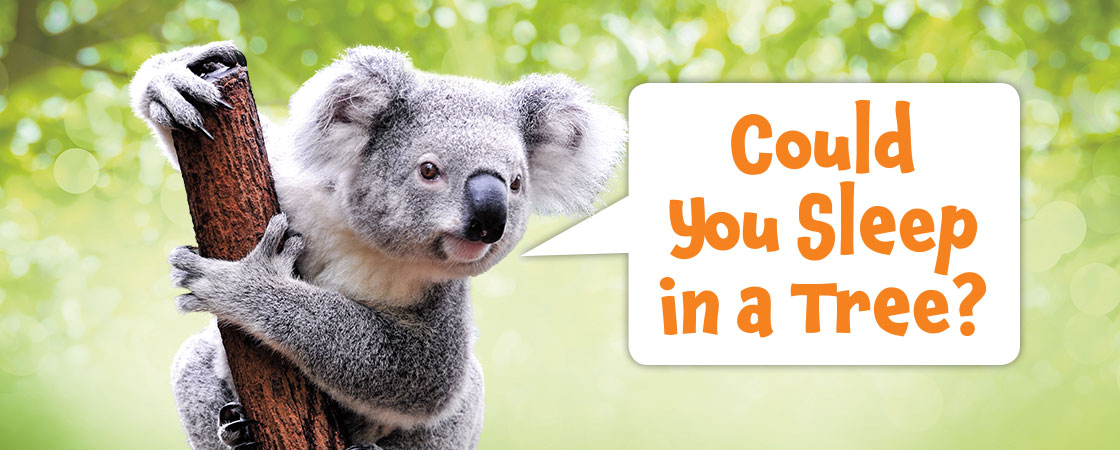Shutterstock.com
A koala sleeps safely in a tree.
Imagine getting ready for bed. But instead of heading to your room, you climb a tree! That’s what a koala does. It finds two strong branches and digs its sharp claws into the bark. Then it closes its eyes and sleeps for 20 hours.
Sleeping in a tree might not sound comfortable to you. But this treetop bed helps the koala stay alive. High in the branches, the koala snoozes safely. It’s far from wild dogs that could try to attack it.
Other animals also have clever tricks for staying safe while they sleep. Dolphins, ducks, and fruit bats can sleep with one eye open, always on the lookout for danger. Otters wrap themselves in seaweed so they don’t float away. And zebras and elephants can sleep standing up, ready to run at the first sign of trouble.
The little koala climbs high into a tree. It tucks its furry little body between two strong branches. It digs its sharp claws into the bark. Then it closes its eyes and goes to sleep for 20 hours.
Sleeping high up in a tree might not sound restful to you. But this koala’s treetop bed helps it stay alive while it dozes. High in the branches, the koala slumbers safely, away from wild dogs that could attack it.
Koalas aren’t the only animals that have clever tricks for staying safe while they snooze. Some birds take seconds-long naps while they fly. Dolphins and ducks sleep with one eye open. Otters hit the hay wrapped in seaweed so they don’t drift away. Zebras and elephants can sleep standing up, ready to bolt at the first whiff of a lion. And meerkats sleep in big groups, snuggled together in underground tunnels.

